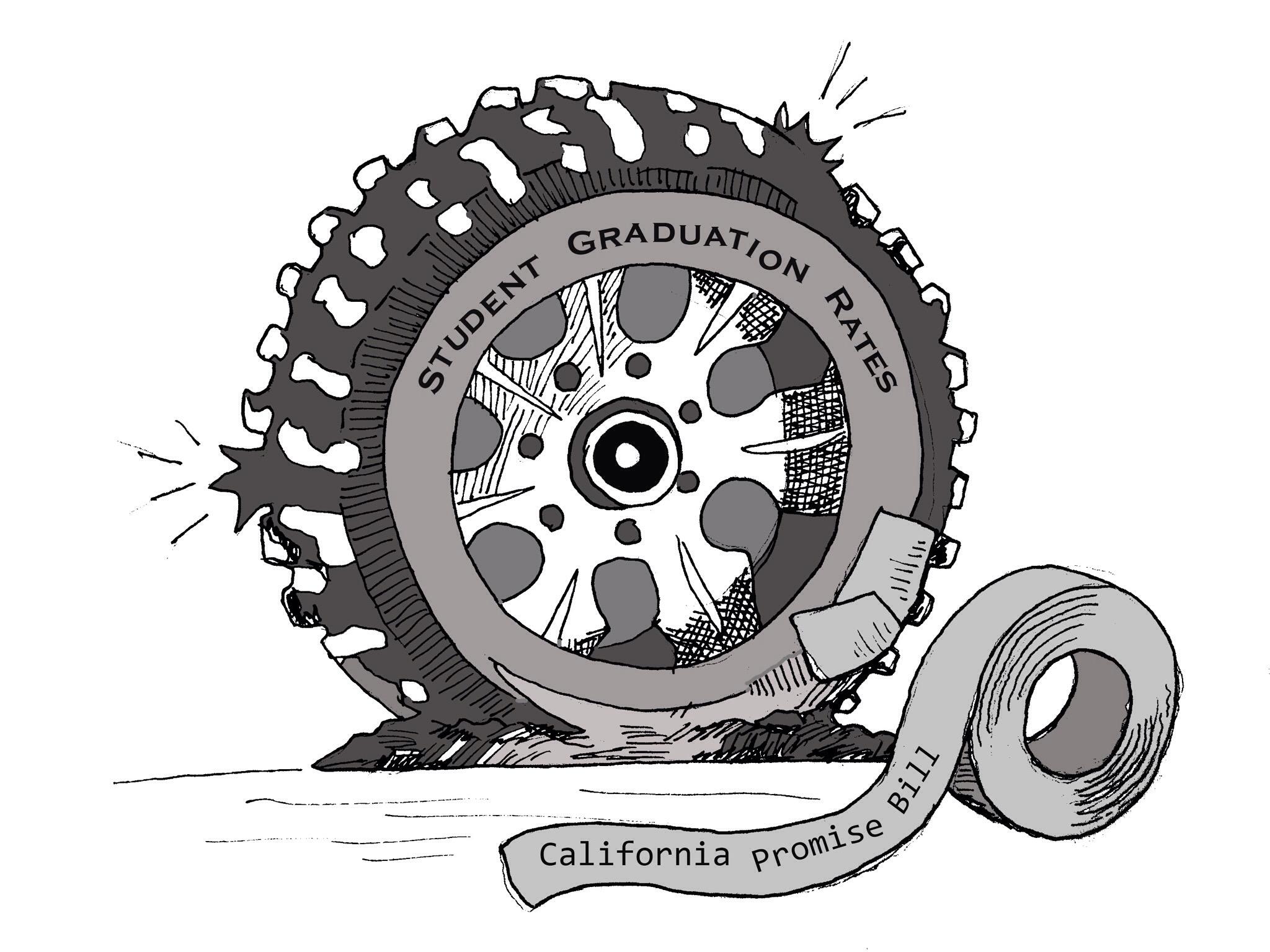Students who attend California State universities dish out around $26,000 for tuition, books and living expenses, according to Campaign for College Opportunity. With the thousands of dollars being paid to educational institutions, students still find themselves knee-deep in a battle for open classes.
The struggle for students is enrolling in classes that prove beneficial for getting a degree in the fastest possible time.
Up until recently, this has been four years. Four years to graduate from a university and enter the world prepared to tackle the job market. According to 2011 statistics from the Cal State system, only 19 percent of California State University students graduate from college in four years, contrary to the national average of 34 percent.
The national graduation rate almost doubles the largest system of higher education that is Cal State institutions. The question becomes, how can the California State University system get back on track with the rest of the nation?
Wheels are already in motion on correcting the path as a bill was presented to the office of Gov. Jerry Brown. The bill is headed by state Sen. Steve Glazer, democratic representative of the seventh district, and is promised to make four year graduations commonplace once again.
According to the Los Angeles Times, Senate bill 412 looks to create California Promise programs across all 23 Cal State campuses.
Students who are in the program, primarily low income and first generation college students, will receive benefits such as extra support from academic advisors, priority registration and a freeze on their tuition. The bill has two basic criteria that must be met. The participating student must carry 30 units in an academic year and maintain individual campus requirements.
Is this plan something feasible for Sonoma State University to put into place? As it is, Sonoma State students find it troublesome to gain access to classes they need due to impacted majors or few class sectionsavailable. This program is a smoke screen, simply switching one group of students who can’t get into classes for another group. Thus, the problem persists.
If the bill wants to make a difference, there needs to be language dedicated to opening up more class sections. By opening up classes in impacted majors, students would no longer have to stress over getting into a needed course, and can meet their graduation date on time.
The “California Promise” bill limits the availability into the program by placing low-income, minority and first generation as priority for the program. There are thousands of other students who do not fall into these categories but share the same troubles when it comes to getting the proper classes. Why limit who can excel and graduate in four years?
The path to increasing four year graduation rates is unfolding, and a couple Cal State campuses have implemented programs that work.
Cal State San Bernardino and Cal State Fullerton have increased their rates by using their own programs. Perhaps we should follow their lead.




































